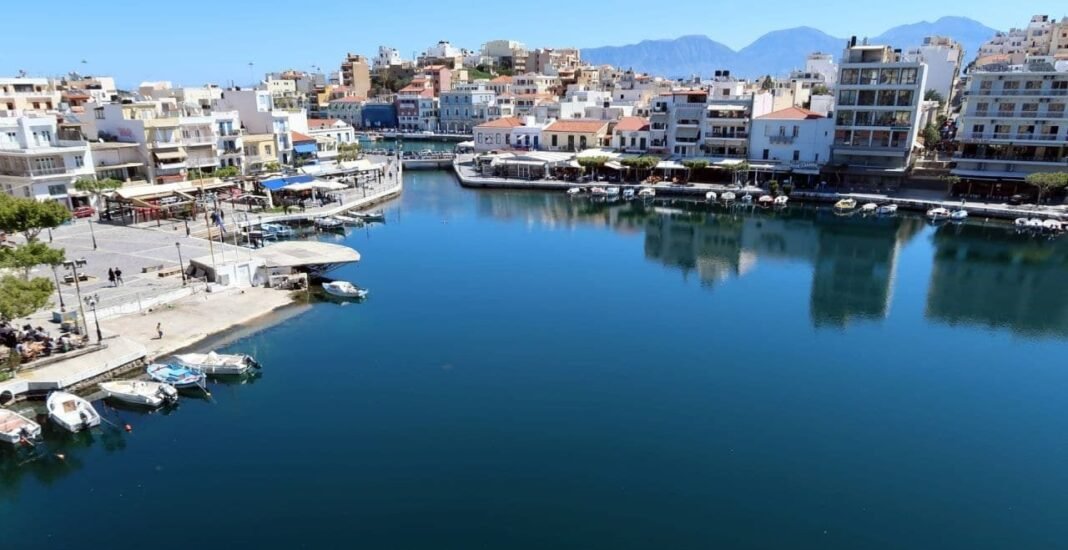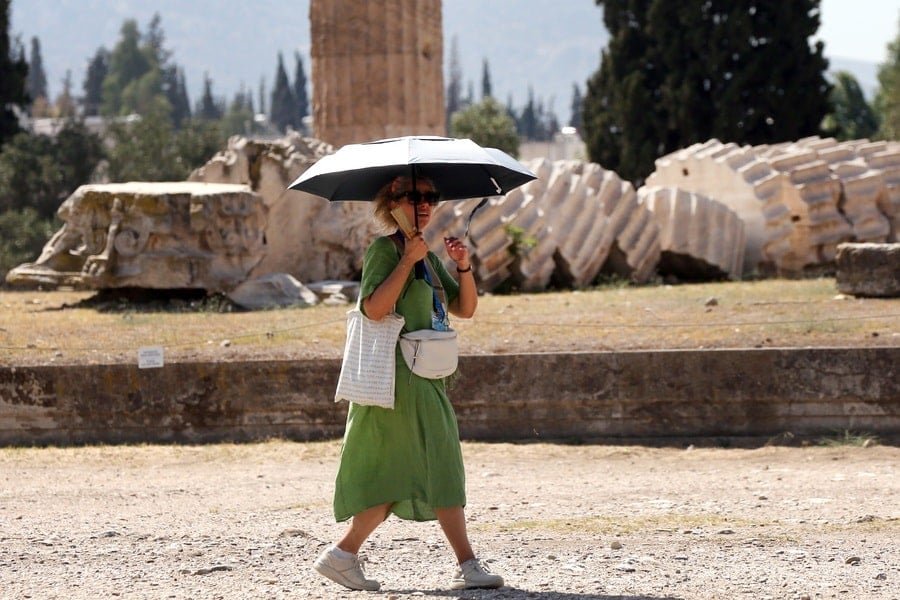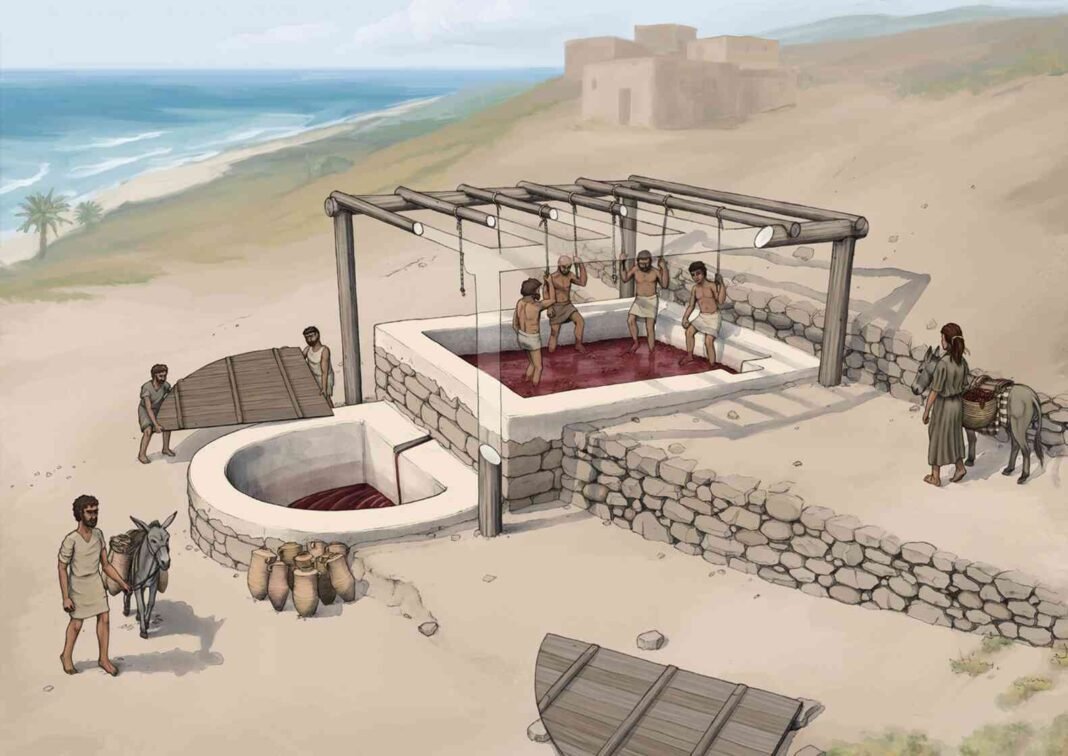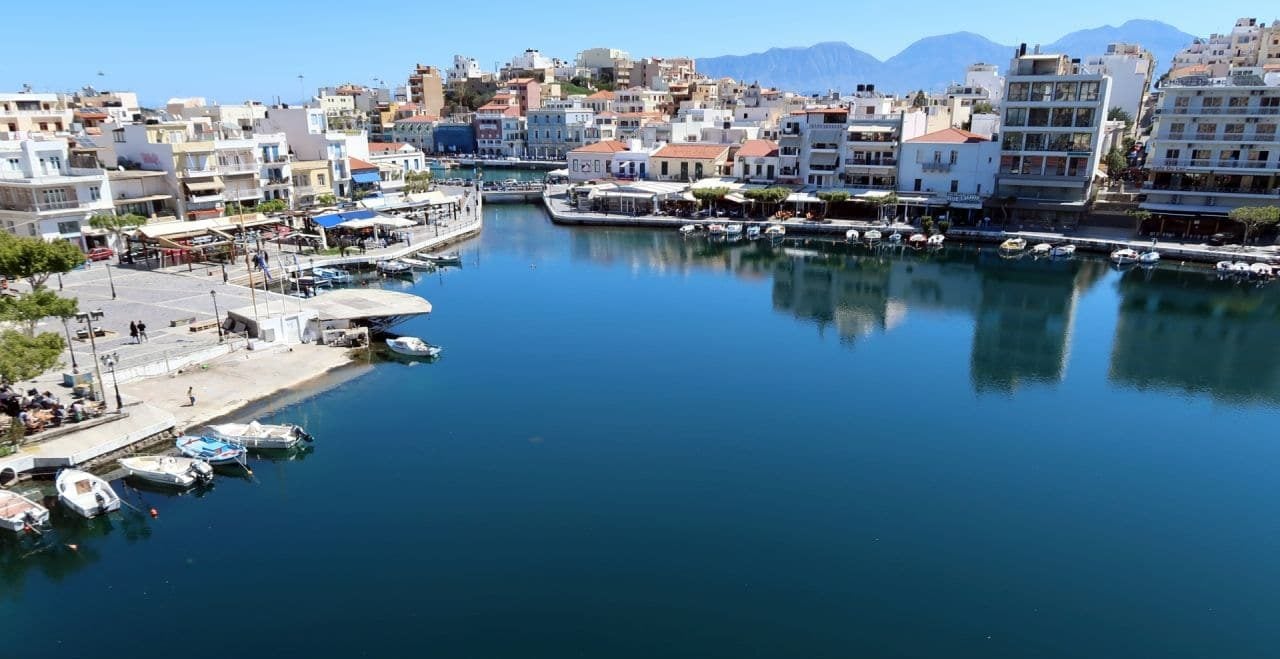
Lake Voulismeni (Greek: Λίμνη Βουλισμένη) is an ancient lake located in the center of the city of Agios Nikolaos on the Greek island of Crete. The lake has been known as “the Santorini earthquake” lake, and it’s used as “proof” that it is an ancient volcano. Tony Cross examines the evidence.
By Tony Cross
I was interested in the article on the earthquake of July 9th 1956, because here in Agios Nikolaos on Crete it directly led to one of the greatest misunderstandings about the history of the lake here. It’s known in Agios Nikolaos as “the Santorini earthquake,” and it’s used as ‘proof’ that the lake here is an ancient volcano.
The popular belief for many decades has been that the near-circular, and very deep, lake here is an ancient volcanic crater. Examining the limestone rocks that surround the lake however, shows this to be clearly false. Were the lake volcanic, we would find igneous (volcanic) rocks around the lake, and we don’t. We now know that there are no volcanoes at all on Crete; it’s not a volcanic island.
The earthquake of 1956 led to the firm belief here that the ‘volcano’ at the lake is connected by subterranean passages to the Nea Kameni volcano at Santorini. This belief is so strong that it’s used as evidence to ‘prove’ that the lake is, indeed, volcanic.
The local myth and the lake of Agios Nikolaos on Crete

I’ve studied the lake here for many years, and I have put together the chain of events and the false assumptions that led to this local myth about underground pipework and the volcanic lake.
The earthquake struck in the very early morning and was felt very strongly in Agios Nikolaos. It caused no major damage here but it did bring most residents out onto the streets. The question on everyone’s mind of course was “what caused this earthquake?”.
At the time we didn’t have the huge worldwide network of seismometers that we have today, so it was likely several hours before even the seismologists could be certain of the exact location of the epicentre. This was eventually determined to be just south of the island of Amorgos.
For the citizens of Agios Nikolaos talking together in that early morning, there was of course no information at all on the location of the earthquake, and where facts are absent, rumour and misinformation fills the gap. Some older citizens likely remembered that six years earlier, in 1950, there had been a major eruption of Nea Kameni in the Santorini caldera. That eruption caused many earthquakes, some of them strong, and many of these were felt in Agios Nikolaos.
People reasoned that since the Santorini eruption of 1950 had caused earthquakes to be felt in the town, then this 1956 earthquake must also be caused by an eruption of Santorini. That’s how the earthquake became known locally as “the Santorini earthquake”.
Bubbles in the lake
That name, and the false assumption on which it was based, may have died out over time; however, but for another event that was observed here. At the time of the earthquake, someone walking by the lake noticed bubbles rising at the surface and many dead fish. Depending on who is telling the story, there may also have been a smell of sulphur and the lake may have changed color.
And here’s where the myth was born.
Most people already believed that the lake was a volcano and they now believed that the earthquake had been caused by an eruption of Nea Kemeni at Santorini. The bubbles at the lake and the dead fish must therefore have been caused by an underground pipework connection between the volcano at the lake and Nea Kameni at Santorini. This underground pipework was thus proof that the lake was volcanic.
This is the story that most people in the town will tell you, even today, because they heard it from their parents and grandparents who were there at the time. As a geologist, albeit an amateur one, this story is clearly a myth, because it contradicts not only the evidence in the rocks around the lake, which really do prove that the lake is not volcanic, but the records show that there was no eruption of Santorini in 1956…!
Myths are often more exciting than the truth, and even though the rest of the world knows that the 1956 earthquake was south of Amorgos, it’s still “the Santorini earthquake” here in Agios Nikolaos.
Debunking the myth
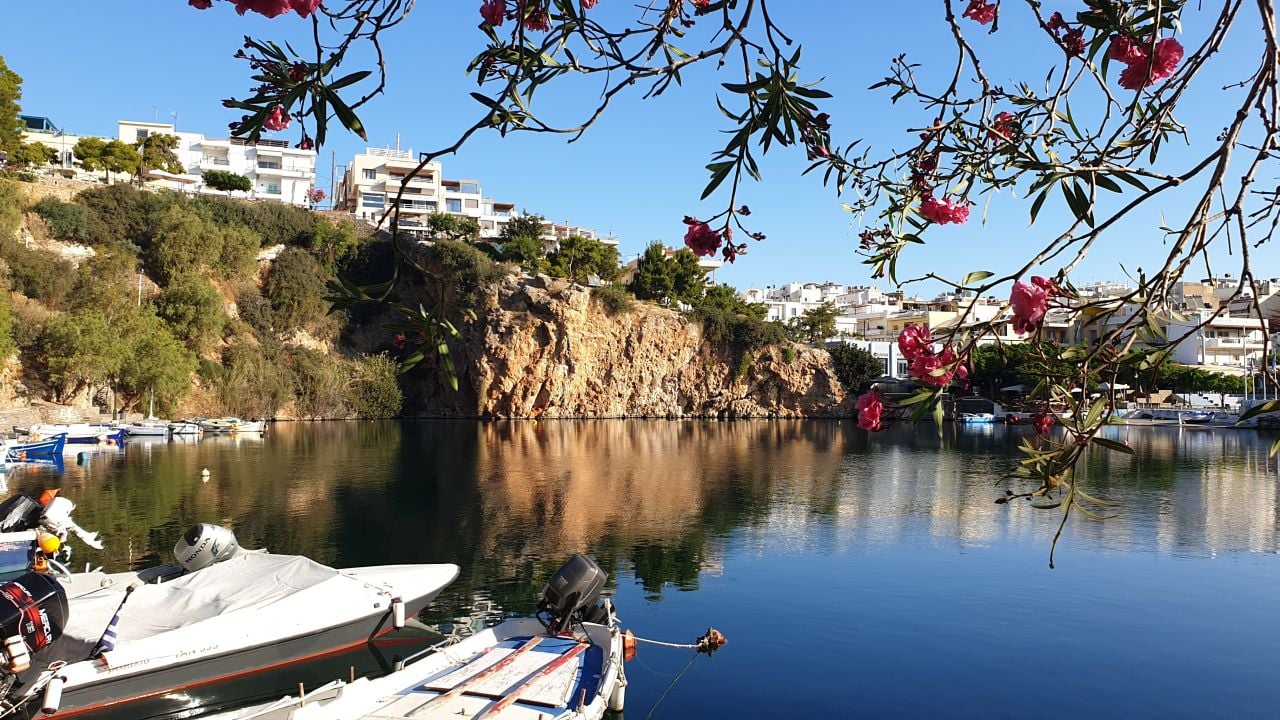
There is of course, a loose end here; if there is no underground pipework connection to Santorini, then what did cause the bubbles and dead fish in the lake?
To answer that we need to understand that the lake is a sinkhole caused by an ancient collapsed cave. The walls of the lake are far from smooth, divers all report that the walls of the lake are full of caves, pockets, and cavities. We also know that an earlier earthquake, in October 1856, blocked the freshwater spring that had fed the lake, turning it stagnant and smelly.
A channel was dug between 1867 and 1870 to allow the nearby sea to flood into the lake, flushing away the stagnant water. Near the surface, the exchange of waters would have been turbulent and the stagnant water would have been flushed out of the pockets, caves, and cavities near the surface.
Deep in the lake, however, the exchange of water would have been quite gentle and stagnant water in these pockets, caves, and cavities would have remained, trapped by the higher density seawater.
The violent ground shaking during the 1956 earthquake would have shaken many of these pockets of stagnant water free and, being less dense than the seawater in the lake, they would have risen rapidly to the surface.
Just as in a champagne bottle, as the pressure dropped near the surface the dissolved gasses, many of them poisonous, would have come out of solution, bursting as bubbles on the surface. The fish in the lake, seeing the early morning sunlight glinting on these bubbles as they rose, would have mistaken them for food, ingesting the poisonous gases dissolved in the bubbles – hence the dead (or unconscious?) fish.
There may have been a smell from these stagnant water bubbles, which could easily be mistaken for sulphur, or more likely, was assumed to be a sulphurous smell later on. In addition, the turbulence caused by the shaking of the earthquake and by the rapidly rising stagnant water, would have brought up large quantities of silt from the lake bottom and sides, possibly changing the apparent cooler of the lake.
I have presented this alternative, and far more likely, theory many times in the town, along with the clear evidence that the lake is not volcanic and that there was no eruption of Santorini in 1956. Yet people still want to cling to the myths that the lake is volcanic and is
connected to Santorini by underground pipework. And all because of the 1956 Amorgos earthquake.
